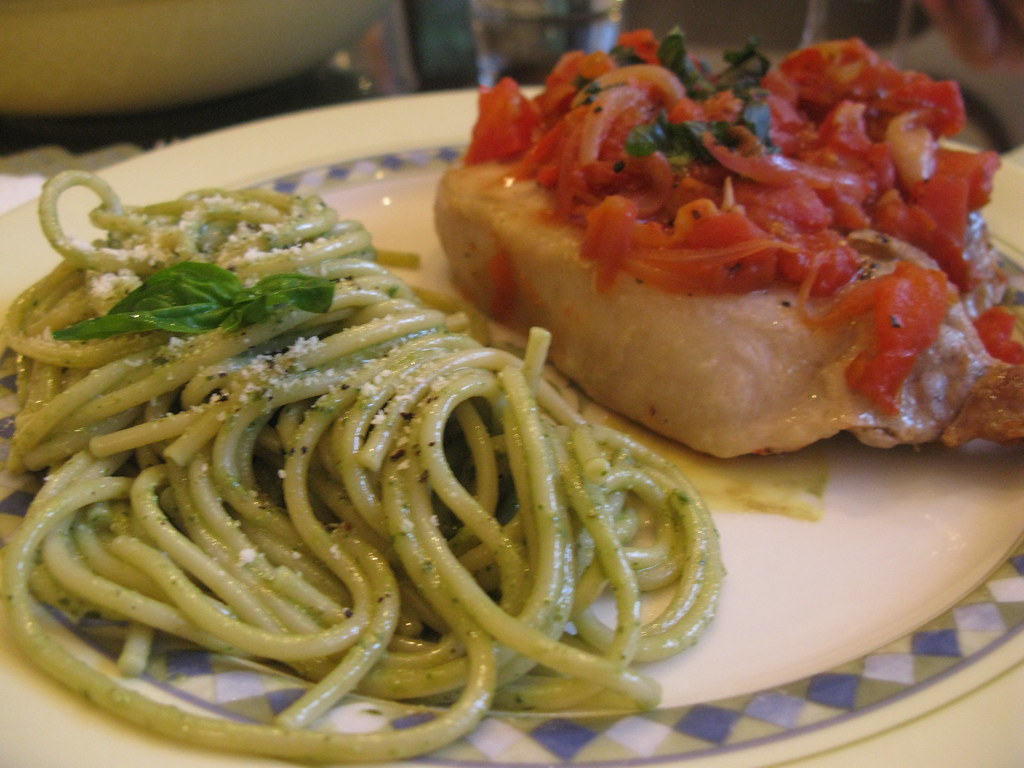 a Mother's Day feast
a Mother's Day feast
This was the dinner table for Mother's Day this year, and I think Dad and I have reason to be proud of the spread we put out. Matt would have helped had he not been working, but he did buy the lovely flowers. I picked up a nice bottle of chardonnay at
Lenox Wines, and then whipped up some mushroom risotto and a fava bean spread on Arthur Avenue bread. Dad chipped in with some luscious dijon mustard sword fish. It was a heavenly meal.
Since graduating college, I've become a big fan of risotto and have made it a number of times, including a particularly memorable batch prepared in honor of Nathan's twenty second birthday with pumpkin, porcini mushrooms and red wine. To die for. However, there was a time that I found this simple dish absolutely intimidating. If it were not for my friend Anthony, who is an amazing cook, I doubt I would have ever even attempted the dish. I remember Tony making it for Natalie's birthday senior year and being amazed that he had prepared such an ambitious menu. Pork loin and risotto for 20 people is certainly an impressive feat, but the risotto itself is not nearly as complicated or tricky as I had one believed. With good ingredients and a little patience, anyone can make a delicious, creamy risotto in under an hour.
 mushroom risotto
mushroom risotto
The trick to risotto is knowing that unlike regular rice, which typically uses a 2:1 ratio of water to rice, risotto can absorb more than four times its volume in liquid. In order for the rice to cook properly, the broth must be added gradually so as to not overcook it. The broth should also be warm, or the rice won't cook properly.
To start your risotto, heat some olive and then cook onions and garlic until they begin to soften. This is called the
sofrito. Then you can add your extra ingredients, like the cremini mushrooms we used. There are plenty of great potential additions: anything from sausage, meatballs, shrimp, lobster, chard, asparagus or squash will be great. Once they're just about cooked, removed them from the pot with a slotted spoon to leave behind the olive oil, which will be nicely infused with the flavor of your added ingredients.
Toast the rice in the drippings for a few minutes, making sure it gets well coated. Pour in some wine, and stir until it evaporates. Then you can start to add the broth, one ladle at a time. Recipes vary on the exact amount to use, but you can probably get away with less if you cook over lower heat and let most of the broth absorb between additions. Cook at too high a temperature, and your broth will boil away before the rice can absorb it properly. Add more stock when the risotto starts to look dry, but be carefully not submerge the rice in liquid. Stir frequently to make sure the rice gets cooked evenly and doesn't stick to the pot.
Your risotto is done when the rice can't absorb any more liquid, and the two elements have become one cohesive mass. The individual grains should be soft but slightly chewy, and the risotto should be liquidy enough that you can pour it slowly, but solid enough that the broth won't separate from the rice. Add your mushrooms or whatever you're using, and stir to incorporate. Mix in some pats of butter, a good amount of grated cheese and freshly ground black pepper, and serve immediately.
As for the rest of the meal, dad handled the fish so I can't say much about it, but I can tell you about my fava bean toasts. They're something I learned to make when my food co-op threw a number of the then unfamiliar legumes at me last summer. I first tried making a stir-fry-esque dish with fennel and bacon that didn't quite come together. For my second attempt, I put the beans front and center with this bright green spread. It was an unqualified success. Basically, it's just a mash of olive oil roasted garlic, boiled fava beans, a little cream, Parmesan cheese, salt and pepper. It's so simple and tasty!
The only catch with fava beans is that getting them out of the shell is a little labor intensive. First, you have to peel the pods, and then you have to boil the beans for a couple of minutes. After that, you cool them off in ice water and shell them. It's a bit of a pain in the ass, actually, but it's not that hard. It's probably not worth the trouble on a regular basis, but they are a nice change of pace every so often.
 fava bean toasts
fava bean toasts


















